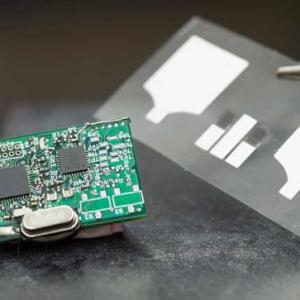
Engineers at the University of California San Diego have developed the first flexible wearable device capable of monitoring both biochemical and electric signals in the human body. The Chem-Phys patch records electrocardiogram (EKG) heart signals and tracks levels of lactate, a biochemical that is a marker of physical effort, in real time. The device can be worn on the chest and communicates wirelessly with a smartphone, smart watch or laptop. It could have a wide range of applications, from athletes monitoring their workouts to physicians monitoring patients with heart disease.
Nanoengineering professor Joseph Wang and electrical engineering professor Patrick Mercier at the UC San Diego Jacobs School of Engineering led the project, with Wang’s team working on the patch’s sensors and chemistry, while Mercier’s team worked on the electronics and data transmission. They described the Chem-Phys patch in the May 23 issue of Nature Communications:
“One of the overarching goals of our research is to build a wearable tricorder-like device that can measure simultaneously a whole suite of chemical, physical and electrophysiological signals continuously throughout the day,” Mercier said. “This research represents an important first step to show this may be possible.”
Most commercial wearables only measure one signal, such as steps or heart rate, Mercier said. Almost none of them measure chemical signals, such as lactate.
That is the gap that the sensor designed by researchers at the Jacobs School of Engineering at UC San Diego aims to bridge. Combining information about heart rate and lactate—a first in the field of wearable sensors—could be especially useful for athletes wanting to improve their performance. Both Mercier and Wang have been fielding inquiries from Olympic athletes about the technologies the Center for Wearable Sensors produces.
“There would certainly be interest in the sports medicine community about how this type of sensing could help optimize training regimens for elite athletes,” said Patrick, who is a member of the Center for Wearable Sensors. “The ability to concurrently assess EKG and lactate could also open up some interesting possibilities in preventing and/or managing individuals with cardiovascular disease."
The researchers’ biggest challenge was making sure that signals from the two sensors didn’t interfere with each other. This required some careful engineering and a fair bit of experimentation before finding the right configuration for the sensors.
For more on this project, check out the news source:
